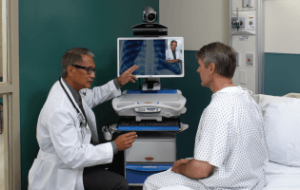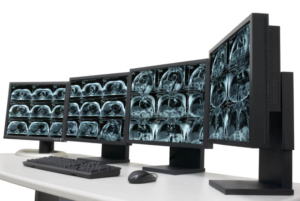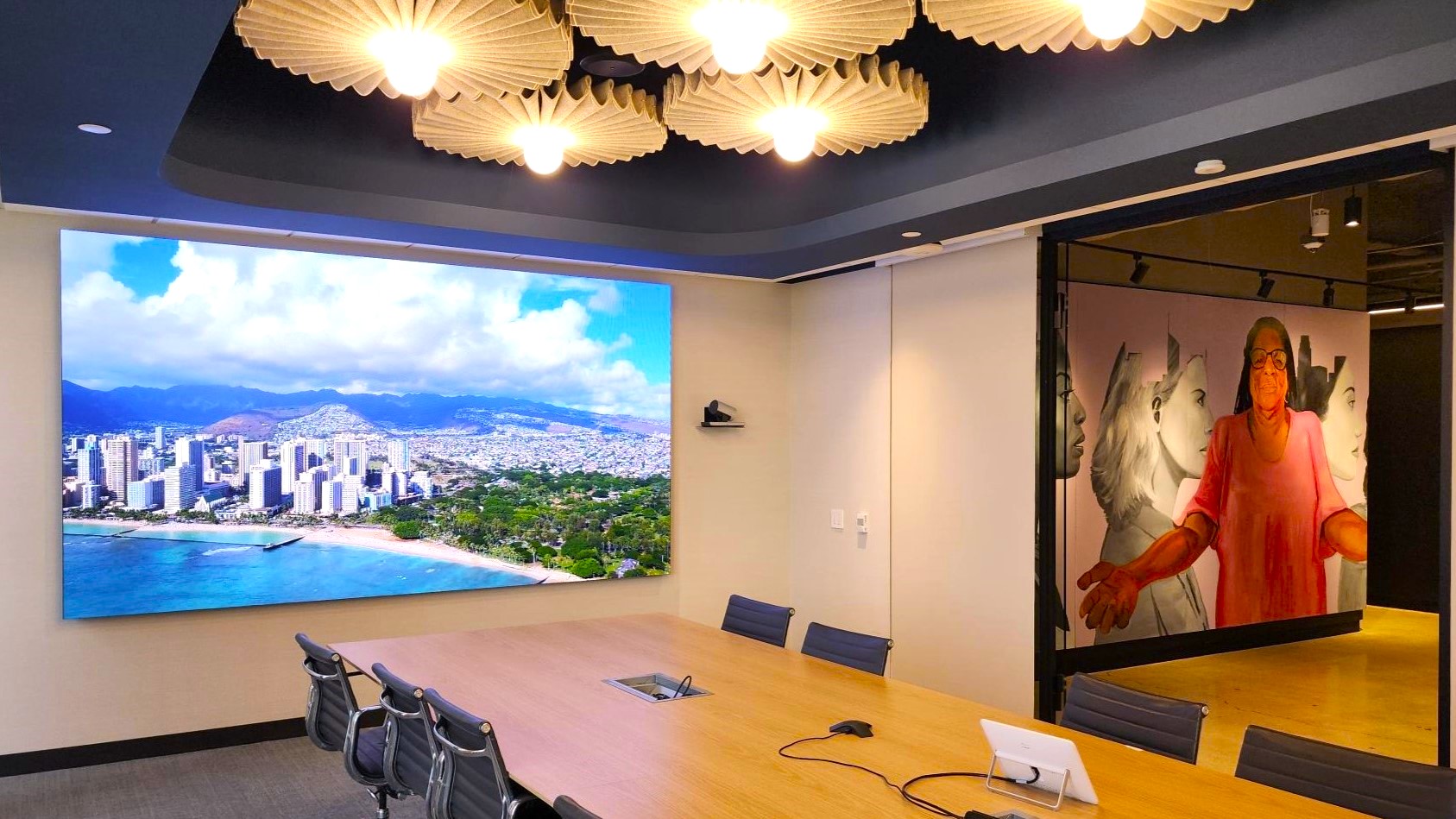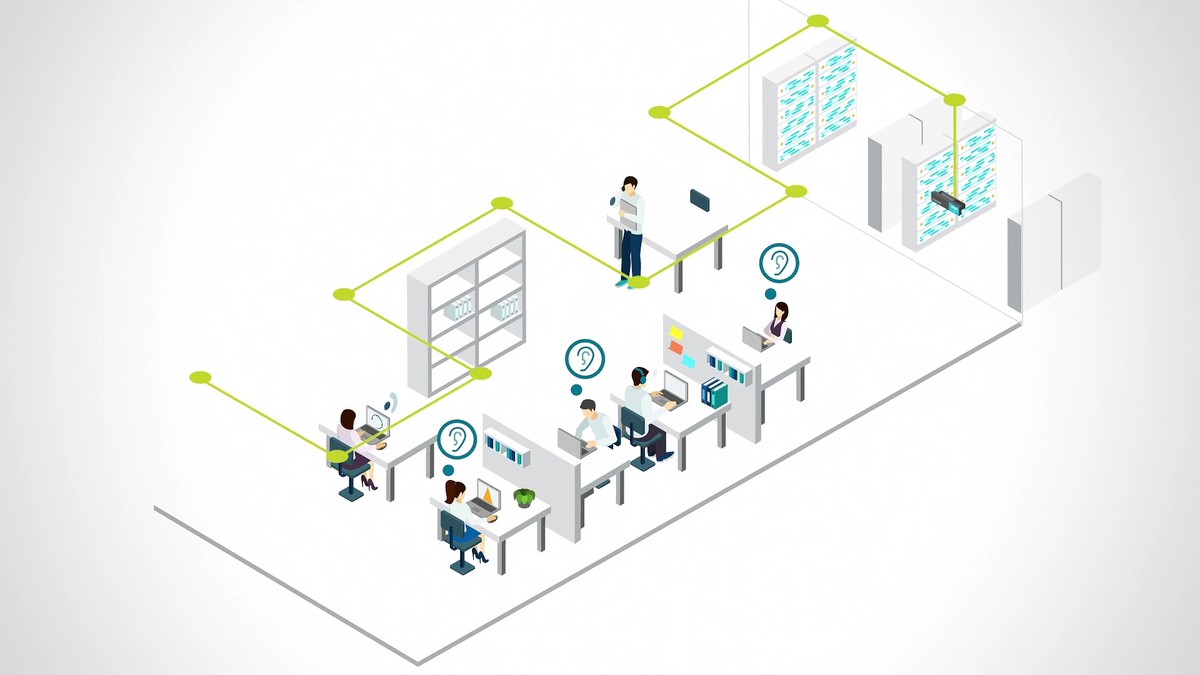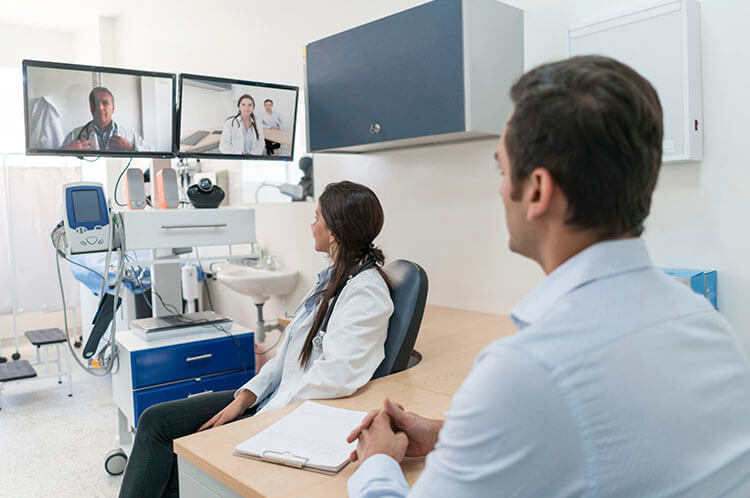
Argue the point if you must, but nowhere is the intersection of AV and IT more fascinating and potentially expansive than in the world of medicine. This goes well beyond video walls in the lobby to direct visitors. Here are five healthcare AV trends transforming the practice of medicine that integrators need to know.
AI-enhanced digital assistants in healthcare can give doctors and providers more time to spend with patients. This is an ample opportunity to bring the instant access paradigm of the smart speaker into the provider-patient relationship in designing new spaces.
Beyond voice-command digital assistants, an obvious leading indicator on this front is data collected from wearables. Data collected from Fitbits, Apple watches and similar consumer devices can provide helpful information on a person’s health and level of activity over a period of time.
As integrators, we work with the data collectors to ensure that metrics such as exercise, sleep habits, and blood sugar levels are taken into account. HIPAA laws around privacy will come into play here, so the data will need to be gathered and managed properly. This data can help providers customize better care delivery plans targeted to specific patient needs.
Smartphone apps are another area to watch in Heathcare AV trends. From measuring steps taken to EKG, there is an app for that. As integrators, we pay attention to advances in AR and VR in healthcare. A recent report from Deloit offers insight into 3D simulators that could, for instance, give a patient a full picture of the likely results of a healthier diet.
Real-time collaboration technologies allow providers to confer with each other, and also brings the benefit of remote connection between doctors and patients. This could mean everything from “virtual rounds” where doctors can check in with patients, to a local pharmacy offering remote consultations with doctors.
Some states are creating telehealth programs where patients can virtually consult with doctors quickly and instantly, and have that call covered by insurance. Telemedicine has the power to remove barriers to getting assessment and treatment by providing an avenue where this access is simplified for provider and patient.
As Telemedicine-as-a-Service takes hold, our industry can play an important role in making the technical logistics work, especially from the provider’s perspective.
Technology-Rich Learning in Med Schools

This is the area of Healthcare AV trends where commercial integrators can geek out a little bit and at the same time provide valuable services.
Medical schools the world over are investing in virtual anatomy labs. UNLV Virtual Anatomy Lab has gone all in on this technology. The Virtual Anatomy Lab is outfitted with 36 student stations, two students to a station, in an active-learning style. This allows students to learn in an environment where samples don’t deteriorate as they do in a standard cadaver lab.
As providers and education hubs install these virtual anatomy labs, the need for touch screen installations from the simple to the complex will be an area for integrators to capitalize on.
A traditional cadaver lab is costly to maintain. These virtual labs, while having a large upfront cost, give students more access to studying the various systems that make up the human body.
One fascinating healthcare AV trend is access to virtual anatomy. One tool available to hospitals, medical schools and even to patients is the Human Visualization platform from Biodigital. Physician and patient interaction can be elevated with platforms like the Human Visualization. Log in and visit any region of the body from literally any angle. Doctors can show patients what is happening and patients can gain a deeper understanding of what is happening in their bodies. Physicians and students can use the paid side of the platform to dig deep into diagnostics and analysis of healthy and unhealthy conditions.
In terms of what we experience with clients, this is probably the most important healthcare AV trend. Network size continues to increase as the demand for more interactivity increases. The growth of data-heavy healthcare technologies will necessitate a well thought-out and robust network infrastructure.
Improving overall patient experience
All of the above healthcare AV trends add up to a better patient experience.
Technology integrators can make the tools available for greater access to medical information and, more importantly, access to healthcare professionals who can learn more about the patient and diagnose with more accuracy and greater interactivity.
Talk to Us About Your Project
Want answers right away?
Talk to a human now.
Or, Call Us Now!
Too busy to chat right now?
Send us a message.


